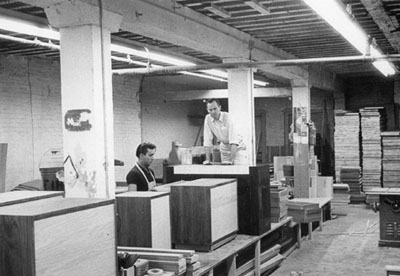 Richard Artschwager From the Factory to the Studio: Reoccurring Motifs "From the Factory to the Studio: Reoccurring Motifs" is an exhibition of Richard Arstschwager's sculptures, paintings and drawings from the 60s, 70s, and 80s. Especially interesting are some preparatory studies that have never been seen before. Artschwager's distinctive art was shaped by Pop Art as well as Conceptualism and Minimalism, competing styles during the period. His unique work is a synthesis of these movements and it continues to be highly influential. Artschwager was born in 1923 in Washington, DC but his family soon moved to Las Cruces, New Mexico. He served in the army and participated in the liberation of Berlin. Upon his return, he attended Cornell University where he received a degree in physical science. In 1949 he entered the atelier of Amedee Ozenfant. Having a family and needing a steady salary Artschwager began to produce furniture in 1953, and by 1956, he was building mass-quantities for commercial sales. It was in this environment that Artschwager began to develop ideas for his art. "Counter," 1962, is one of his earliest and possibly the first sculpture in this vein, and it strongly holds a furniture-like element. During the same period Artschwager started to paint stark landscapes reminiscent of the Southwestern desert, such as "Juniper Matrix," 1962, and "Untitled," 1964. Acknowledging his familiarity with industrial materials, he painted on Celotex, an insulation material with a pebbly surface. While his later paintings were mainly based on architectural interiors, the horizontal lines that surfaced in his earlier landscapes remained a constant theme. If Artschwager's chosen medium for painting is Celotex, then Formica is his chosen medium for sculpture. "Walker," 1964 is one of the earliest examples of his use of Formica. The following year Artschwager had his first exhibition at Castelli where "Walker" along with "Grey Painting," 1964, was first shown. Richard Artschwager's work is about altering perception. One is forced to reassess the recognizable as the viewer is presented with a familiar functional object: a table, chair, or mirror and interact with the object, which is devoid of its functional use on another level. With the collection of works represented in this exhibition, one can see Artschwager's progression as an artist as well as the themes that preoccupy his work. Exhibition: September 12 - October 28, 2006 Gallery hours: Tues-Sat 10 am - 6 pm Leo Castelli Gallery 18 East 77th Street USA-New York, NY 10021 Telephone +1 212 249 4470 Fax +1 212 249 5220 Email info@castelligallery.com www.castelligallery.com |